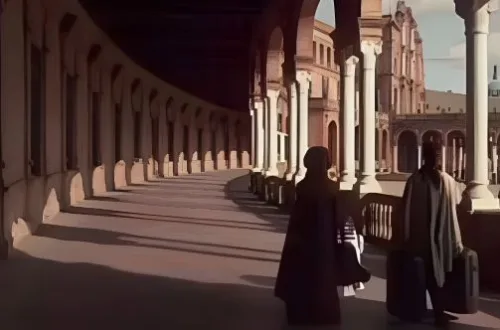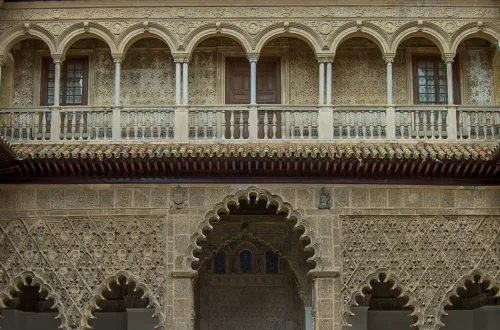
From Synagogues to Secret Passages: Exploring the Jewish Quarter of Córdoba
Nestled in the heart of Andalusia, Córdoba emerges as a city where history whispers from every corner. It’s a place where the past and present blend seamlessly, offering a unique tapestry of art, history, and culture. Among its many treasures, the Jewish Quarter of Córdoba stands out as a must-visit destination. This historic neighborhood invites travelers to step back in time and explore Spain’s rich and diverse heritage.
As you wander through the winding streets of the Jewish Quarter, you’ll encounter a world where medieval synagogues coexist with vibrant modern life. This area serves as a living testament to the cohabitation of Jewish, Christian, and Muslim communities.
It offers a rare glimpse into a period of flourishing cultural exchange and intellectual prowess. The Jewish Quarter of Córdoba not only captivates history enthusiasts but also enchants those seeking to immerse themselves in its timeless beauty.
- Where is This Destination: Unveiling the Jewish Quarter of Córdoba
- What Makes It Special: The Heart and Soul of Sephardic Life
- History of the Place: The Saga of the Jewish Quarter of Córdoba
- Legacy and Resilience: The Enduring Spirit of the Jewish Quarter of Córdoba
- Discover the Wonders: What to See in the Jewish Quarter of Córdoba
- Explore and Engage: Activities in the Jewish Quarter of Córdoba
- Planning Your Visit to the Jewish Quarter of Córdoba
- Embracing the Essence of the Jewish Quarter of Córdoba
“Only love can give us a taste of eternity.”
— Jewish Proverb
Where is This Destination: Unveiling the Jewish Quarter of Córdoba
Nestled in the sun-drenched region of Andalusia, Córdoba takes pride in its rich tapestry of cultural landmarks. This historic city, a jewel in Spain’s crown, is more than just a stop on the map. It’s a gateway to the past. Right at its heart lies the Jewish Quarter of Córdoba, a labyrinth of narrow lanes and hidden courtyards, waiting to tell its centuries-old tales. Surrounded by well-known landmarks, its location is both central and serene. The Quarter sits whispering stories near the grand Mosque-Cathedral, offering a quiet retreat from the bustling city life.
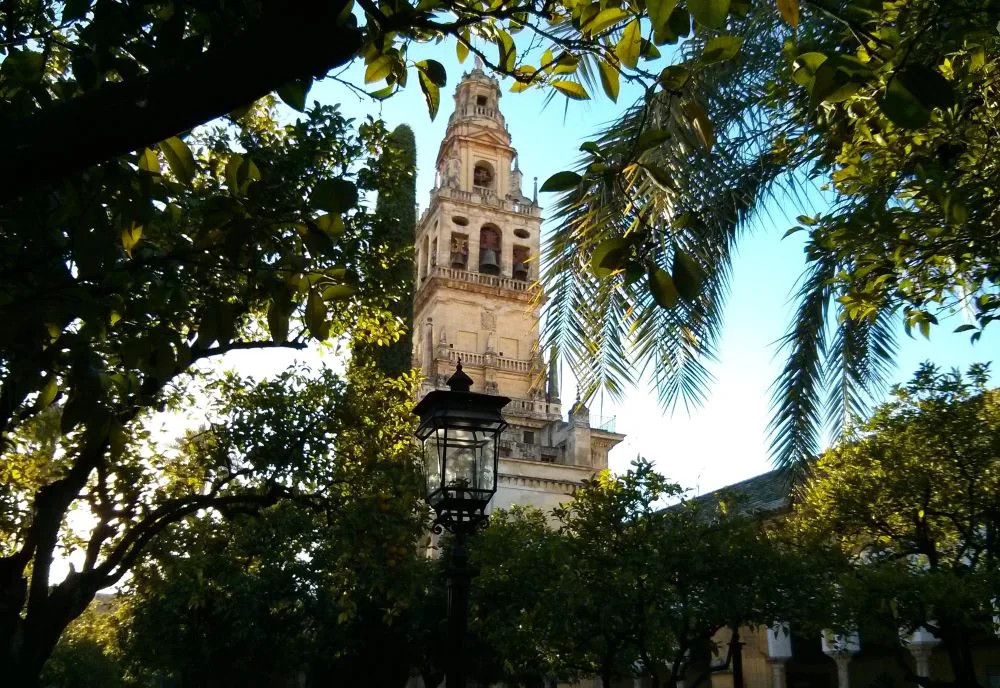
What Makes It Special: The Heart and Soul of Sephardic Life
The Jewish Quarter of Córdoba is not just another neighborhood. It’s a vibrant canvas painted with the strokes of history, culture, and architectural marvels. This area stands as a testament to the Sephardic life that once thrived within its walls. Here, medieval synagogues sit shoulder to shoulder with Andalusian courtyards, each telling its own story of a time when Córdoba was a beacon of cultural harmony and intellectual exchange.
What truly sets the Jewish Quarter apart is its ability to transport visitors back in time. As you meander through its streets, the past comes alive. The architectural styles here are a feast for the eyes, showcasing everything from intricate Mudéjar artistry to the simple elegance of Andalusian design. But it’s not just about what you see; it’s about what you feel. Walking through the Jewish Quarter, you can’t help but sense the layers of history beneath your feet and the legacy of a community that shaped Córdoba’s identity.

History of the Place: The Saga of the Jewish Quarter of Córdoba
The Jewish Quarter of Córdoba is a place where history doesn’t just speak; it echoes through the ages. This historic neighborhood reached its zenith under the rule of the Arab Caliphate, led by Abderahman III. It was a time when Córdoba became a beacon of enlightenment, with the Jewish community playing a pivotal role in the city’s cultural and intellectual achievements.
However, the path of history is often a tumultuous one. The Jewish Quarter faced significant challenges, particularly during the invasions by the Almohad and Almoravid dynasties. These periods were marked by hardship for the Jewish community, as their freedoms were curtailed and their safety threatened. Yet, the spirit of the Quarter endured, showcasing resilience in the face of adversity.

Legacy and Resilience: The Enduring Spirit of the Jewish Quarter of Córdoba
Among the luminaries of this era was Maimonides, a towering figure whose intellect and writings left an indelible mark on Jewish thought and philosophy. Born in Córdoba in 1138, his legacy is intertwined with the history of the Jewish Quarter, embodying its intellectual fervor and cultural richness.
As history marched on, the Jewish Quarter experienced a resurgence, only to face an eventual decline leading up to the year 1492. This year marked a turning point, as the edict of expulsion issued by the Catholic Monarchs forced the Jewish community to leave Spain, casting a shadow over the vibrant life that once flourished in the Quarter.
Through its highs and lows, the Jewish Quarter of Córdoba remains a testament to a past filled with brilliance and adversity. Its streets and buildings tell a story not just of a community’s survival but of its profound impact on the cultural and intellectual heritage of Córdoba.
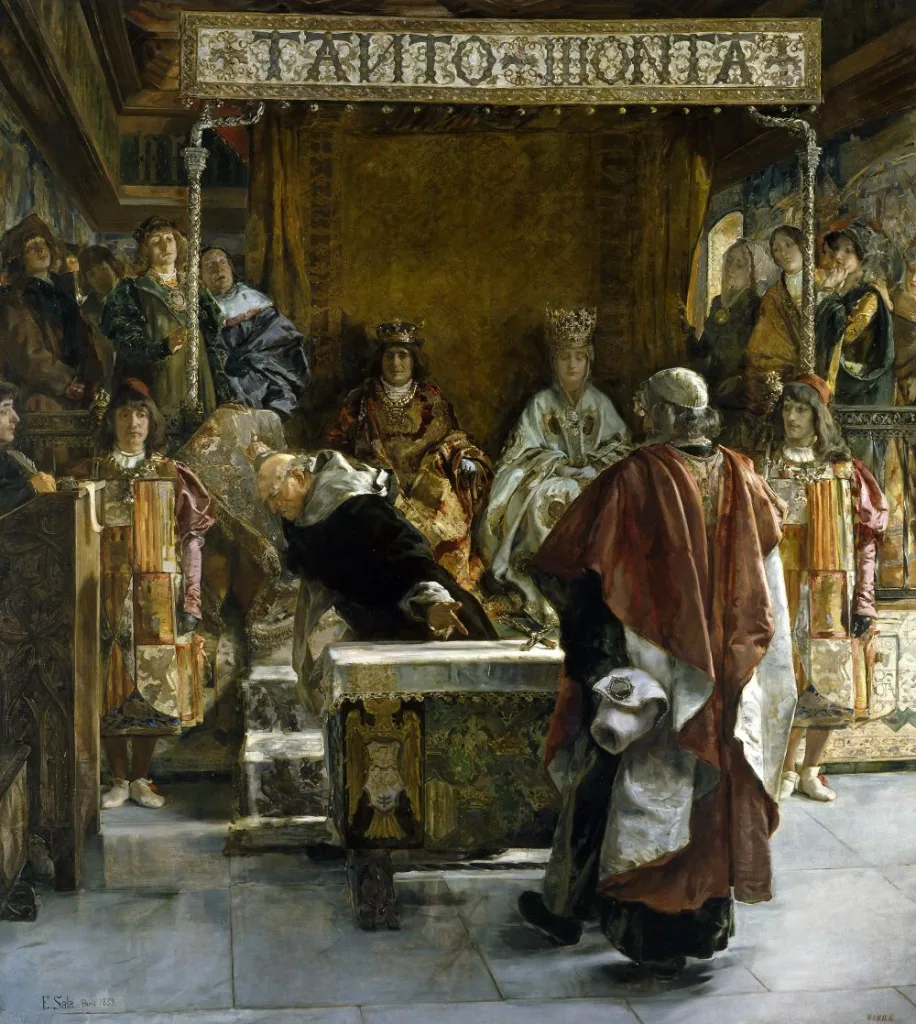
Discover the Wonders: What to See in the Jewish Quarter of Córdoba
A visit to the Jewish Quarter of Córdoba is like stepping into a living museum, where every stone and street has a story. This historic area, brimming with culture and mystery, invites travelers to explore its many treasures.
The Córdoba Synagogue
The Córdoba Synagogue, located in the historic Jewish Quarter of Córdoba, Spain, is a significant historical edifice built in 1315. Its architecture reflects the Moorish style, and despite its small size, it suggests it might have served various purposes, such as a private synagogue, a yeshivah (Jewish educational institution), kollel (a communal study place), or even a synagogue for a trade guild.
Post the expulsion of Jews in 1492, the synagogue underwent several transformations, including serving as a hospital and later a chapel, before being declared a National Monument in 1885. It has since been restored multiple times, celebrating its rich history and connection to significant figures like Maimonides.
The synagogue’s architecture was influenced by restrictions imposed by Christian leaders, reflecting its humble status compared to Catholic churches. It features a small courtyard leading to an entrance hall that served as a cloakroom and place for ritual ablutions. The prayer hall is notably high for its size, and there’s a separate women’s section above the entrance hall, characterized by its broad arches and elaborate decorations. The eastern wall houses the hekhal (Torah ark), showcasing the synagogue’s religious focus.
Today, the Córdoba Synagogue stands as the only remaining synagogue in the city from a time of persecution and is open to the public, serving as a museum rather than an active house of worship.

Moorish Gate of Almodovar
The Puerta de Almodóvar is an ancient gate located in Córdoba, Spain, with origins dating back to the Arab period. It served as a key access point through the city’s old walls and is named after the road leading to Almodóvar del Río, approximately 23 kilometers from Córdoba. The gate also had other names during the Muslim era, such as Bab al-Chawz (Gate of the Walnut) or the Gate of Badajoz, marking an entrance on the western section of the wall.
Today, the Puerta de Almodóvar is one of only three remaining gates from the medieval enclosure of Córdoba, alongside the Puerta del Puente and the Puerta de Sevilla. It is the oldest and least modified of these gates and is part of the historic center of Córdoba, which was declared a World Heritage Site by UNESCO in 1994.
The current structure, built in the 14th century on top of the original Arab gate, features two prismatic towers connected by a slightly pointed arch that forms a high barrel vault. This arch was sealed in the early 19th century by a wall with a linteled door. The gate is constructed from ashlar sandstone with additions of small stone blocks and brick.
Adjacent to the gate, along the exterior of the city wall, runs a stream that connects to the Arco de la Luna. This area, developed in the 1960s, was intended to create new tourist spaces within the city. It was discovered that an ancient Jewish cemetery was located here, just outside the Jewish Quarter of Córdoba.
The street alongside this section of the wall was renamed Calle Cairuán in 1968, in honor of Córdoba’s twinning with the Tunisian city of Kairouan, reflecting historical connections and architectural similarities between Kairouan’s mosque and Córdoba’s Mosque-Cathedral.
At the entrance to this area, statues of two notable Cordobans were erected: a bronze statue of the Roman philosopher Seneca by Amadeo Ruiz Olmos, funded by the bullfighter Manuel Benítez “El Cordobés,” and a monument to the Muslim philosopher and physician Averroes, unveiled two years later.

Casa de Sefarad in the Jewish Quarter of Córdoba
The “Casa de Sefarad – Casa de la Memoria” is a cultural center and museum nestled on Calle Judíos in the Jewish Quarter of Córdoba, which opened its doors in the spring of 2004. Its founding aimed to recover and honor the Jewish legacy in Spain, particularly after the expulsion of the Jews in 1492 by the Catholic Monarchs. This space serves as a reminder of the rich Sephardic history and Córdoba’s cultural significance as an ancient Jewish hub.
Housed in a building from the 14th century, which served as a communal home in the 19th century before being refurbished for its current role, the museum is designed around a central courtyard typical of Córdoba. Its rooms delve into various facets of Sephardic life and culture, including domestic life, the role of women in Al-Andalus, Jewish festive cycles, and Sephardic music.
Casa de Sefarad is more than just a tourist destination; it’s an educational hub that fosters the study of Jewish culture through its library and by hosting cultural events such as concerts and theatrical performances. Highlights among the museum’s exhibits include displays on everyday Jewish life, the main courtyard adorned with Jewish symbols, portraits of influential women in Al-Andalus, and a room specifically dedicated to the Jewish Quarter of Córdoba. This room features a detailed plan from the 14th century and an in-depth explanation of the Synagogue and its cultural significance. Furthermore, a section dedicated to Sephardic music underscores its importance within Jewish culture.
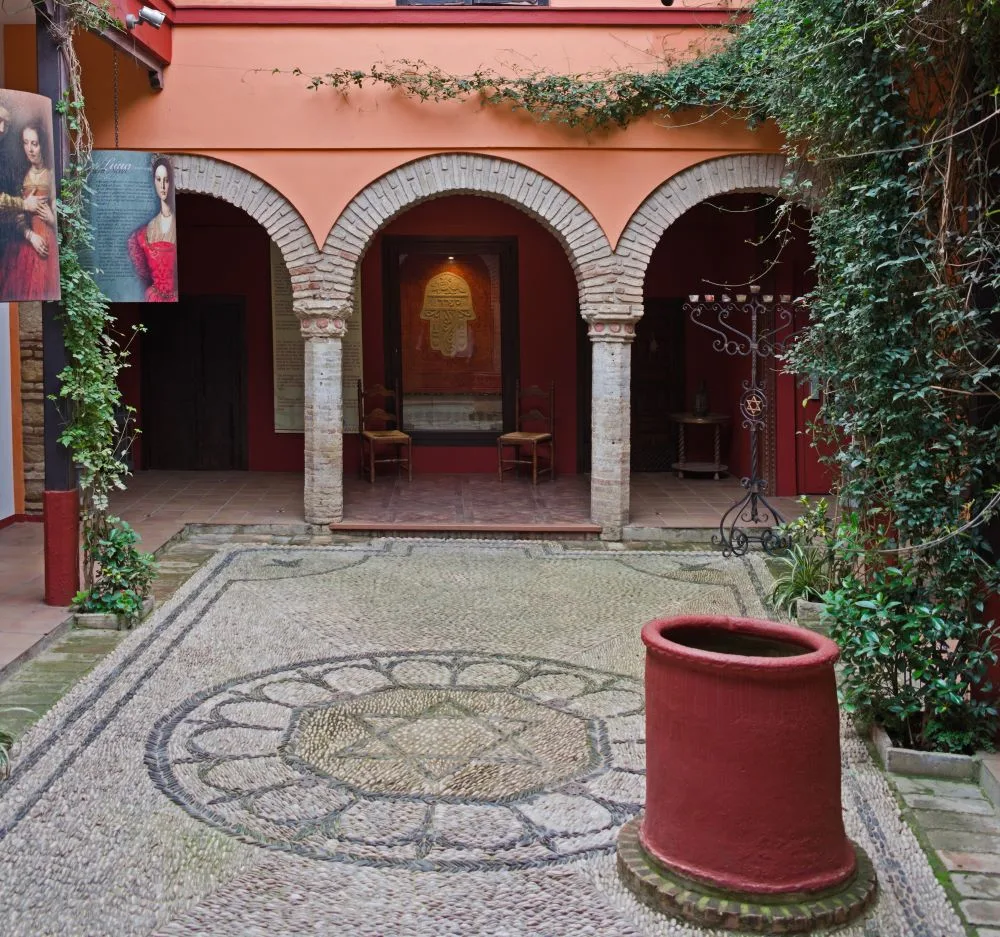
Unveiling the Mystery: Secret Passages of the Jewish Quarter of Córdoba
Venture into the Jewish Quarter of Córdoba, and you step into a world brimming with history and intrigue. Beyond its well-trodden paths lie secrets waiting to be discovered. Among these, the hidden passages of the Quarter offer a thrilling glimpse into a bygone era. They tease the imagination with tales of escape, hidden treasures, and clandestine meetings.
The Jewish Quarter of Córdoba, with its narrow cobbled streets and ancient buildings, holds more than meets the eye. Rumors of secret passages beneath these historic streets have long captivated locals and visitors alike. These hidden corridors whisper of a time when secrecy was a necessity. They served as lifelines during periods of turmoil, offering safe passage for those in peril.
Embarking on a quest to uncover these secret passages turns a visit to the Jewish Quarter of Córdoba into an adventure. Each corner turned, and each door opened could reveal the entrance to a hidden world. The thrill of possibly standing at the threshold of history adds an unparalleled depth to the exploration of this historic area.
The existence of these passages is more than just an urban legend; it’s a testament to the resilience and ingenuity of the people who once called the Jewish Quarter home. While many of these passages remain shrouded in mystery, their very notion invites visitors to look beyond the surface and imagine the lives intertwined with these hidden routes.

Explore and Engage: Activities in the Jewish Quarter of Córdoba
Step into History with Guided Tours
Dive deep into the heart of the Jewish Quarter of Córdoba through guided walking tours. These tours bring to life the rich Jewish history that permeates every stone and street corner. With knowledgeable guides leading the way, uncover stories of the past that are as captivating as they are enlightening. Each step retraces the lives of those who walked these streets centuries ago.
Savor the Flavors of Sephardic Cuisine
For food enthusiasts, culinary tours in the Jewish Quarter offer a feast for the senses. Sample traditional Sephardic cuisine, a delightful blend of flavors that tells its own tale of cultural fusion. From savory dishes to sweet treats, each bite is a journey through history and tradition. These culinary tours not only satisfy your palate, but also enrich your understanding of Sephardic culinary heritage.
Immerse Yourself in Culture at Casa de Sefarad
Casa de Sefarad stands as a beacon of culture and history in the Jewish Quarter of Córdoba. Participate in workshops or attend talks that delve into various aspects of Jewish and Sephardic life. These engaging activities provide a deeper connection to the rich tapestry of Jewish history and culture that defines the Quarter.
Experience Local Festivals for Cultural Immersion
To truly immerse yourself in the vibrant culture of the Jewish Quarter, plan your visit during local festivals. These events offer a unique opportunity to experience the living traditions of Córdoba. From music and dance to food and crafts, festivals bring the community together in celebration of their heritage and invite visitors to join in the festivities.
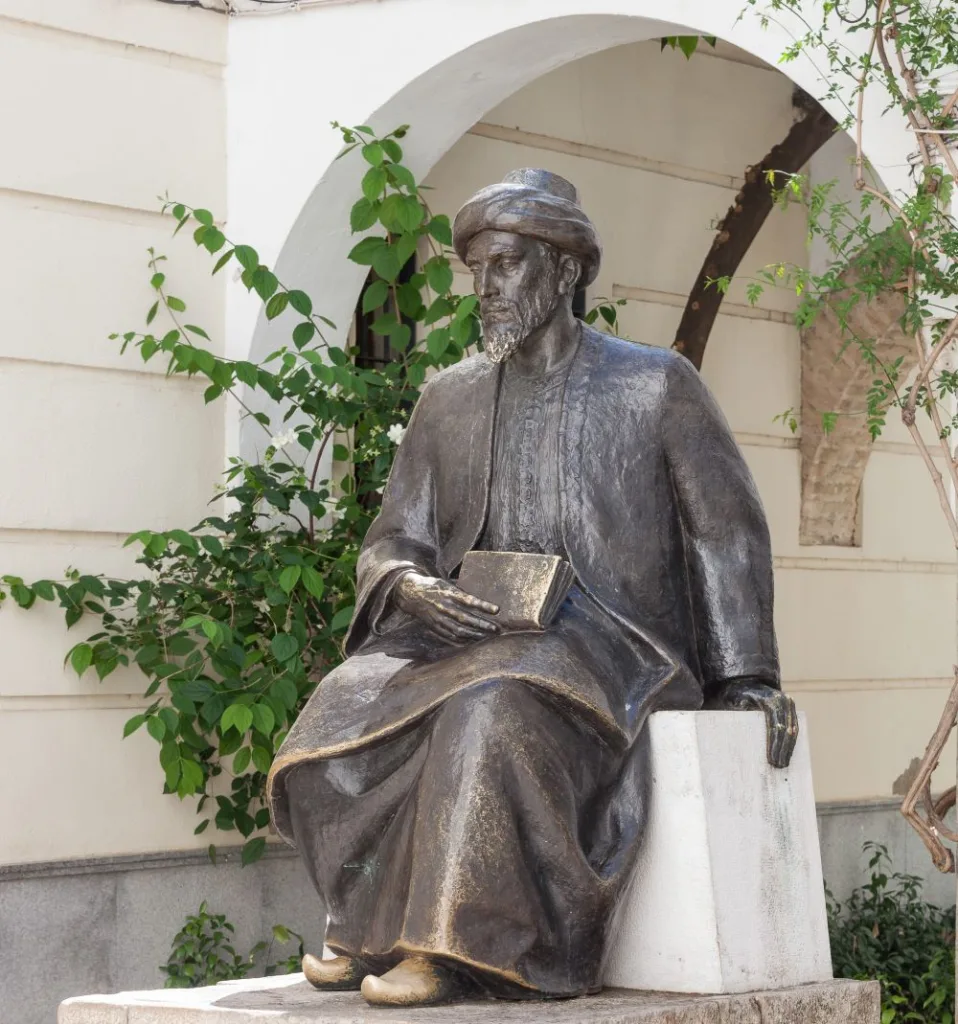
Planning Your Visit to the Jewish Quarter of Córdoba
Deciding when to visit the Jewish Quarter of Córdoba can greatly enhance your experience. Spring and fall emerge as the ideal seasons, offering milder temperatures that are perfect for wandering its historic streets. These seasons not only provide comfort, but also bring the Quarter to life with vibrant colors and a pleasant atmosphere.
During these times, Córdoba hosts several cultural events that shouldn’t be missed. The Courtyards Festival in May, for example, offers a unique glimpse into the local way of life, with private courtyards opening to the public, adorned with flowers in full bloom. This festival alone makes spring an exceptional time to visit.

Determining the Length of Your Stay
How long to stay in the Jewish Quarter of Córdoba depends on what you wish to discover. For those on a tight schedule, 1–2 days are enough to cover the highlights. This short visit allows you to explore key sites like Casa de Sefarad and the ancient Synagogue, giving you a taste of Sephardic history and culture.
However, if time allows, consider staying up to a week. A longer visit offers a more in-depth exploration of the Jewish Quarter and its surroundings. It gives you the leisure to delve deeper into the rich tapestry of history, culture, and cuisine that defines this area. Additionally, it allows for day trips to nearby sites, further enriching your experience.

Embracing the Essence of the Jewish Quarter of Córdoba
The Jewish Quarter of Córdoba is more than just a destination; it’s a portal to a bygone era. Here, history isn’t just studied; it’s felt. Every cobblestone, every wall, and every whispering alleyway tells a story of Sephardic heritage. This quarter is a vibrant tapestry woven with the threads of culture, mystery, and centuries-old traditions. It stands as a testament to the resilience and richness of Jewish history.
An Unforgettable Addition to Your Spanish Itinerary
For anyone planning a trip to Spain, the Jewish Quarter of Córdoba is an essential stop. It offers an unparalleled opportunity to dive deep into the heart of Sephardic heritage. Beyond its historical significance, the Quarter invites visitors to explore its hidden corners, savor its culinary delights, and celebrate its festivals. Here, every moment promises an unforgettable journey into the past.

